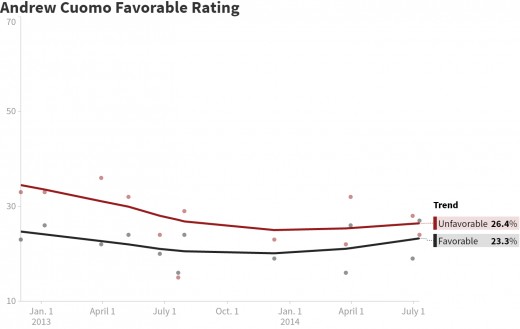The Decline of the Empire (State)
If asked, we could all name an ineffective leader. Whether it’s an old boss, a friend, or a politician, we all know someone who just isn’t doing their jobs right. Yet despite their inability, these types of people aren’t often removed from their post. In fact, quite often, these people are promoted or praised for their bad leadership. These people are frustrating even more so when there are others more qualified and capable, but simply aren’t in positions to take control. It’s like a drunk person driving a car, with a sober person in the back seat, hands tied.
Enter Governor Andrew Cuomo. Esteemed politician, member of a political dynasty, and the worst thing to happen to New Yorkers since Hurricane Sandy. The difference being that Sandy only lasted a few days, while Cuomo is lasting years. But to be fair, the damage caused by a Hurricane is easily identifiable, and can be repaired with relative ease with the proper resources and time. Not to mention no New Yorker would elect to have another hurricane slam the state again, if given the choice. But the damage from an ineffective leader, can be sustained, widespread, and unseen. Correcting this damage, can take decades, if not longer, and often requires going undoing everything previously put in place.
Under the Cuomo administration we’ve seen minimum wage raised to fifteen dollars, hydraulic fracturers shutout, and as startup incubation implemented in the Empire State. While all of these may seem like steps in the right direction, the devil is all in the details. And for the little good his administration has overseen, such as marriage equality enacted, it's all overshadowed by his inability to act like a Governor.
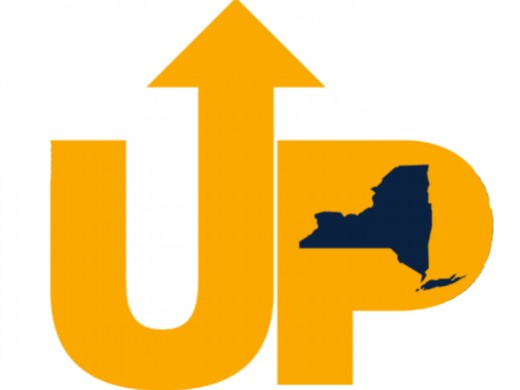
Start Up, New York
The highlight of Cuomo's economic plan was simple: companies come to New York, partner with a local SUNY school, and pay nothing in taxes for a decade. Targeting advanced manufacturing, biotech, renewable energy, and high-tech companies, Startup NY promised to create over 4,000 jobs and $230 million in private investment in just five years. By giving companies low cost or rent free space adjacent to state universities, and sharing infrastructure and expertise, the program certainly looked promising on paper. Two years after implementation, Start-Up NY has had poor results. The state has created less than 10% of the promised 4,100 jobs and procured just $13 million in private investment, or a little over 5%. At this rate, we will see the full job count and investment total by 2036.
When pressed for answers as to why the program hasn't delivered better results, the state, which has thus-far spent over $50 million in advertising the program, essentially advised that these things take time. Empire State Development Corporation (ESDC), the state agency overseeing Start-Up NY, CEO Howard Zemsky compared themselves to Facebook, stating that the company had less than a dozen employees in their second year. While that may be a viable response on the surface, it doesn't account for the fact that Facebook was started out of a college dorm room, while Start-Up NY had the backing of the second largest state budget, some $140 billion in FY2014. Imagine what Facebook would've look liked if they had even 1% of this in seed capital. When this small detail is factored in, the results of Start-Up NY are abysmal.
Facebook had 10 people after its second year. I don't think anyone...pointed the finger at them and said, 'You're a failure.' That's a terrible, unproductive way to conduct business as far as I'm concerned.
— Howard Zemsky, ESDC CEOStart-Up NY was dead on arrival. The program had little chance of succeeding, but not due to a fault of merit. By itself, Start-Up NY is a great initiative to foster economic growth. The problem arises when you put something like Start-Up NY in the state with the highest tax burden in the nation. Instead of a comprehensive economic plan, one that lowered taxes and lifted regulatory burden on small business, the Governor plopped down a neat looking one-sided measure all wrapped up in a nice looking logo and slick commercials, hoping for the best. What New Yorkers got was additional government waste and further public funds squandered.
Energy Opportunity Missed
For the six years between 2009 and 2015, the NYS Department of Environmental Conservation (DEC) studied the effects of hydraulic fracturing, the technique used to extract natural gas from subsurface rock formations. Ultimately, the DEC, with the support of Cuomo, permanently banned the extraction process in New York. Environmentalists praised the decision, but the opportunity cost was big, as hydrofracking could have simultaneously provided readily available cleaner energy and boosted the upstate economy, specifically the Southern Tier which has seen a 65% loss in manufacturing jobs since 1990.
The decision to ban hydrofracking was one made for political convenience, and not for public health. The EPA, the federal equivalent to the DEC, spent $32 million in studying the exact same thing. What they concluded was already known: with proper oversight, hydrofracking presents no widespread systemic threat to drinking water. The problem comes with oversight, with many states being unable or simply unwilling to dedicate the resources and time it would take to ensure energy producers are fully complying. The regulation has been reactive, instead of proactive, in which drillers are fined only after spills have occurred, with fines being minimal wrist slaps.
Had hydrofracking been permitted, it could have been a boon for the Southern Tier, with drillers prepared to pay $500 per acre annually to farmers and land owners who allow right-of-way access for drillers. In a region that has lost signifant population, and already generates most of its electricity through natural gas consumption, fracking would have had a major positive impact. Once again, Cuomo failed to lead, and chose instead to do what special interests sought.
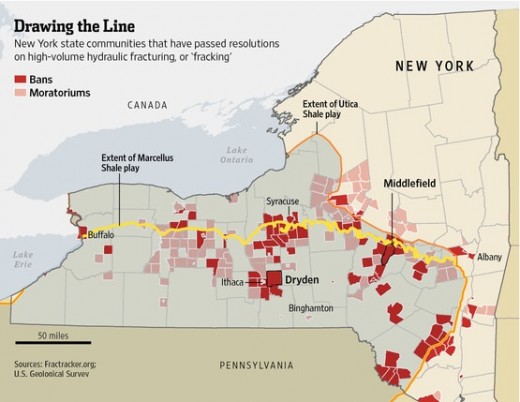
Do you approve of Governor Cuomo's administration?
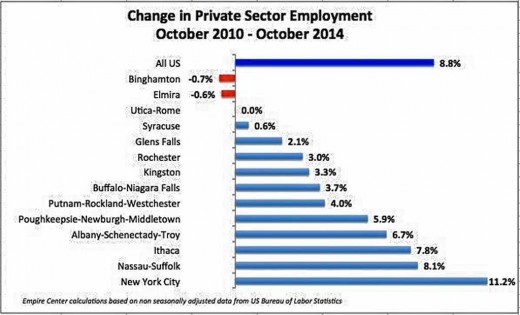
Fifteen Dollars and Counting
In April, Cuomo enacted legislation that raised minimum wage to $15 per hour. In his most radical fiscal policy yet, the Governor promised to lift over two million New Yorkers out of poverty with this increase. Besides the fact that this drastic increase in wages could very well hurt the same people its meant to help, it's also something that upstate simply cannot afford. Between a shrinking workforce, burdensome taxes, and inappropriate licensing requirements for specialized labor and niche firms, the upstate economy remains extremely fragile, and it's unlikely a large rise in mandatory pay will net a positive impact upstate.
Where this increase will benefit New Yorkers is downstate. In the Greater New York City region, employees will see fifteen dollars per hour by 2021, depending on locality and the size of the employer. The New York City economy has been booming, thanks to the combined effort of both Cuomo and former city Mayor Michael Bloomberg, who's pro business agenda helped the city recover quickly post-recession. Meanwhile however, upstate has stagnated, with job growth being nominal due to continued loss of manufacturers, who once dominated the economy of upstate. But Cuomo seems unconcerned, and continues to pump billions into downstate projects such as LaGuaria Airport and Pennsylvania Station.
Drugs, Corruption, and Internal Strife
The Governor likes to tout his progressive style, and has stated on a few occasions that New York is still the most progressive place in the nation. But despite these claims, Cuomo has passed up on marijuana legalization, a tool that could've simultaneously eased the states cost to enforce existing marijuana laws, and stimulated the upstate economy. Instead, he labeled recreational marijuana a "non-starter" and instead opted for a lackluster medical program.
Instead of recreational marijuana legalized, we've seen New Yorkers drug of choice has become heroin, particularly in, you guessed it, upstate. Overdose of the drug has increased considerably in upstate counties, as the drug remains cheap and widely available, with little real long-term solutions by the "progressive" Cuomo. The only solution the Governor has put forth thus far is to increase access to overdose treatment injections.
But perhaps more damning than the heroin epidemic, is Cuomo's shady dealings and allegations of corruption. New York has always had an opaque government, but Cuomo vowed to weed out corruption within Albany. In 2013 he established the Moreland Commission, an independent panel of investigators seeking evidence of misconduct among state politicians. Since the start, the Commission was stonewalled by the Governors office, disallowing them to investigate anyone within Cuomo's circle. Finally, following a vapid package of ethics reforms being passed with the annual budget, Cuomo disbanded the Commission, and was immediately accused of a cover up. When pressed, the Governor came back with 'it's my commission, and I can do what I want with it.'
This response was not sufficient for US Attorney Preet Bharara, who launched a federal investigation in Cuomo, Albany, and the Moreland Commission. This investigation ultimately led to the indictment of several prominent politicians including state senators Dean Skelos and Jeffrey, and most notably Assembly Speaker Sheldon Silver. In the end, no action was brought against Cuomo's office, but it certainly didn't bode well for the Governors image.
To top off all of Cuomo's inappropriate actions and inadequate efforts, he seems more interested in proving himself superior to incumbent New York City Mayor Bill De Blasio, who he's engaged in a childish squabble and imprudent power struggle. How this battle began is not quite known but the two seem to become more distrusting of one another each day. Instead of signs of state unity and party unity, as De Blasio and Cuomo are both Democrats, New Yorkers see signs of division, while DNC leaders see signs of friction during a tenuous federal election cycle.
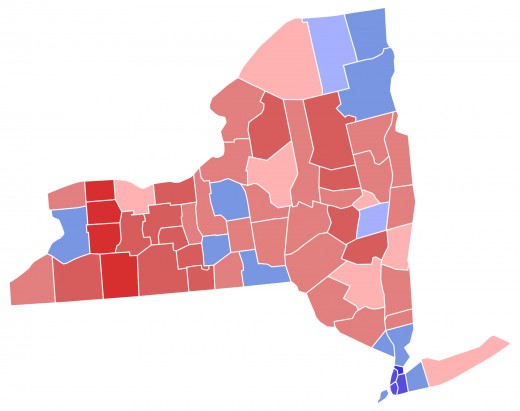
Uphill to 2018
With a consistent list of failures, Cuomo faces an election in two years that may very well be the end of his administration. New York lacks term limits for the governor, which means Cuomo could theoretically be head of the Empire State indefinitely. While he surely has New York City's vote locked up, along with suburban Westchester and Nassau counties, he's lost a great majority of the upstate vote, although still clings to Buffalo, Syracuse, Albany, and for some reason, Binghamton. What should concern the Governor is his lack of support in Suffolk, Putnam and Dutchess counties. Areas that still fall within the Greater New York Region, and voted for Cuomo's 2014 Republican contender Rob Astorino.
But perhaps the 2014 election represents a greater problem for New York. The electoral is skewed due to the size of New York City. If a candidate can win the five boroughs, he only requires a handful of other counties to come out on top. So while the upstate region continues to suffer, Cuomo just needs to ensure Manhattan and Brooklynite's remain satisfied with his performance. Upstate appears to be losing it's voice, and state politicians seem not to care. At a time when all New Yorkers need a competent leader who's in-tune with the everyday problems they live with, the best the establishment can provide is Andrew Cuomo. So I ask again, will the real New York Governor please stand up, and make New York the Empire State once more?
